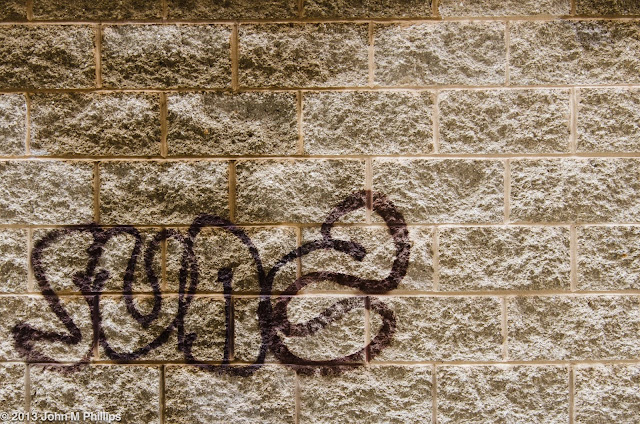A few of these were isolated tags and were on buildings that probably could have done without them.
I don't want to glorify defacement, but I did want to document these as very typical illustrations of tagging. I placed these off-center because I also wanted to feature the surface on which they had been painted.
I found the following tags both inside and outside of a huddle of abandoned buildings on Milwaukee's south side that has a wealth of more elaborate graffiti (that I will show in a later post). But these were simple tags. I believe the first couple were located on the exterior of one of the buildings, where the lighting was ample, but the others were located inside, where the lighting was quite difficult, which made the effort that much more interesting.
I especially liked the fact that the above tag was made on a badly cracked wall and wanted to feature that as part of the overall shot. Love the simple little face. This was not a whimsical choice by the artist, as I saw this same tag, including the face, elsewhere in the building.
These last two tags raise a question of how the graffiti artist decides where to put his tag, but I liked their choices for reasons of artistic and compositional interest.
And then there were tags that were parts of larger graffiti projects. In effect, these were the artist's signatures on their works of art.
What also struck me about these tags and the graffiti in general was the fact that the artists did not seem to be particularly concerned with the public visibility of their art. They seemed to be content to have expressed themselves for themselves as well as perhaps for their fellow graffiti-ists. I think I can relate to that.
John













No comments:
Post a Comment
Note: Only a member of this blog may post a comment.